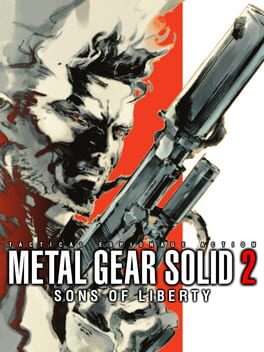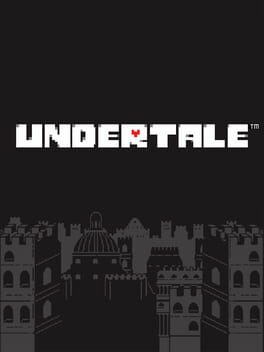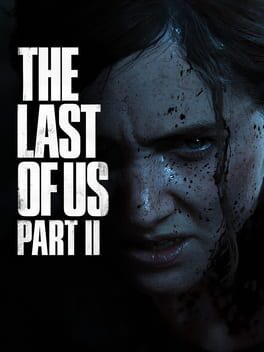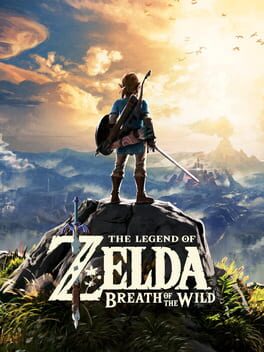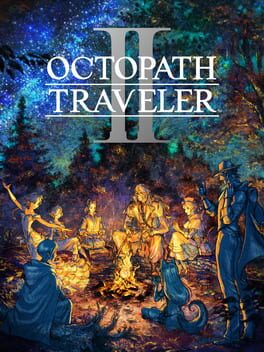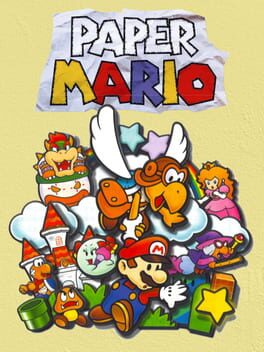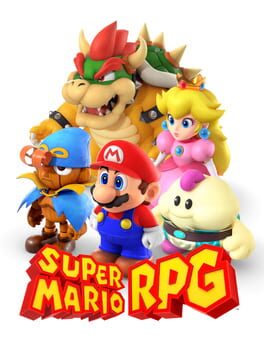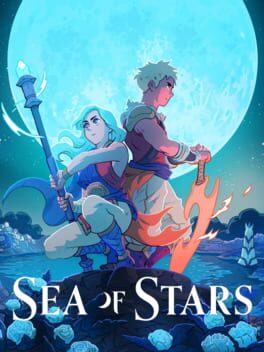Corrugated_Fox
I am a life-long gamer who has amassed a fairly large backlog of games over the years. I rarely have the time to work through it, and I know that I will never be able to clear it, but here are the chronicles of how I have been slowly chipping away at it.
Note that my Backloggd page only shows my gaming updates since about 2018. My previous gaming history and full backlog can be found on my Backloggery page.
Badges

GOTY '23
Participated in the 2023 Game of the Year Event

1 Years of Service
Being part of the Backloggd community for 1 year

Listed
Created 10+ public lists

Shreked
Found the secret ogre page

Roadtrip
Voted for at least 3 features on the roadmap

Adored
Gained 300+ total review likes

Pinged
Mentioned by another user

Well Written
Gained 10+ likes on a single review

Popular
Gained 15+ followers

Organized
Created a list folder with 5+ lists

GOTY '22
Participated in the 2022 Game of the Year Event

Gone Gold
Received 5+ likes on a review while featured on the front page

Donor
Liked 50+ reviews / lists

Loved
Gained 100+ total review likes

Best Friends
Become mutual friends with at least 3 others

Noticed
Gained 3+ followers

Liked
Gained 10+ total review likes

N00b
Played 100+ games
Favorite Games
131
Total Games Played
002
Played in 2024
013
Games Backloggd
Recently Played See More
Recently Reviewed See More
Wonder felt like a true successor to Super Mario World and was a huge improvement over the "New Super Mario Bros" games. There were many times that I got that feeling of being a kid again while playing; that joy of experiencing a new and zany world that was fun to explore and filled with constant surprises. I highly recommend Super Mario Bros Wonder to pretty much anyone, but especially to anyone that grew up playing the original games in their youth. You won't be disappointed.
Then, in early 2023, the game's sequel, Octopath Traveller 2, was released. Word on the internet was that the sequel was an improvement in pretty much every way, having a somewhat tweaked/improved combat system, slightly better visuals (but still used the HD-2D style), the characters' storylines tied together better, and best of all it required no prior knowledge of the first game. I decided I had to check it out.
Octopath Traveller 2 tells the story of eight individuals, each with their own personality, back story, motivations, and character class. When starting the game, you are presented with bios of each character, and whichever one you select will be locked in your party until you finish their storyline (I was a bit rash when making this selection, thinking it would be inconsequential once more characters joined the party, but I was wrong). After you finish your selected character's first chapter you are let loose in the game's world where are free to track down the remaining 7 party members however you see fit.
Each party member's story is broken up into about five chapters. Each chapter has a recommended experience level, and this level increases by a decent amount for each subsequent chapter (you can attempt a chapter under levelled, but I wouldn't recommend it). This was likely done to prevent players from burning through one character's storyline, forcing them to split their time up amongst the stories of other members of the group. I didn't mind this, for the most part, but it was a bit disappointing at times to not be able to continue a character's story until I grinded for experience or levelled up by playing through another group member's story.
All of the character's storylines were well-written, pretty enjoyable, and did a good job of outlining each of the characters' motivations. I didn't care much for the dancer's storyline, but otherwise these were well done. The characters' stories were mostly independent, but they did somewhat tie together towards the end of the game, which gave the group a mutual motivation of sorts. This link was nothing terribly shocking or groundbreaking, but it was still nice to see some sort of connection there.
My favorite aspect of Octopath Traveller 2 was its surprisingly complex turn-based combat. It was easy enough to understand but still required enough strategic thinking to keep things entertaining from the start of the game through to its conclusion. To explain it as simply as I can, in addition to their health points, enemies have shield points that can only be reduced by being attacked by one of their weaknesses. These weaknesses can be determined either through trial and error (trying random weapon/spell attacks) or by using the scholar's "Learn" spell. Each time the enemy is hit by something it is weak to its shield points will decrease, and once these hit zero the enemy will "break", preventing them from attacking for a short time and opening them up to increased damage from your attacks. Enemies still take damage when they have shield points, but the amount of damage they take is significantly less, so it is best to break an enemy before releasing your most powerful attacks.
On top of the shield point system is the BP system. Party members earn one BP per turn (unless they are using BP in that turn), to a maximum of 6 BP. The player can then stack this BP, up to a maximum of 4 in one turn, to unleash numerous regular weapon attacks (good for lowering shield points) or to unleash a charged-up version of a skill/ability (good for causing massive damage to a broken enemy).
The combination of the "break" system and the BP system made for highly entertaining battles, especially when it came to the bosses. The boss battles were a highlight of the game, always being challenging and always requiring good planning and tactical thinking. Bosses kept me on my toes by changing up their tactics mid-battle (they can change their weapon/elemental weaknesses, gain additional shield points, etc.) or by unleashing powerful charged attacks that were devastating if I wasn't prepared for them. Bosses have massive health pools, hit incredibly hard, and often took quite a while to defeat (especially if at or under the recommended level for the area), but it was always fun coming up with a strategy and whittling their health down to zero.
Though I really enjoyed the combat, there are two things I feel some gamers might not like. First, the random encounter rate is quite high. I wasn't bother too much by it, but I'm sure it could be aggravating to some gamers, especially since all encounters are random encounters. You can unlock a skill that, when equipped, reduces the frequency of these encounters, but I feel players won't want to miss out on too many battles as they'll require the XP in order to continue meet the level requirements of unfinished story chapters.
Secondly, every battle in this game, requires the use of tactics. Whether you're fighting a boss or just looking to grind for XP, you will need to put a decent amount of strategy into each battle (unless you are seriously over-levelled, but then you should probably fight more powerful enemies for an increased amount of XP). You can't simply steamroll through lower levelled enemies to gain XP, which makes grinding a bit more of a chore. I thoroughly enjoyed the complexity of the battle system, but there were times that I wished I could put in less effort to get my characters up to the recommended level for their upcoming story chapters.
In addition to the game's combat, there is a fairly sizable world to explore. None of the locations were overly unique or surprising, but there was enough variety to keep things interesting. Each area was enjoyable to explore, and they were all chock-full of treasure chests and hidden items to find. You mostly explore the world by foot, but eventually you gain access to a boat, which opens up the exploration a bit more (though you are quite limited by where you can board it/unload from it, which made using it a bit disappointing). Every town was stocked with NPCs, which could be interacted with in a few different ways. Depending on your team composition, you can coerce info out of the NPCs, steal their items, learn new skills from them, or get them to follow you around. Some NPCs also offer up side quests, but I found the instructions for these to be incredibly vague. I did a few of these but would highly recommend consulting a guide if you plan on tackling these.
This was my first time playing a game with the HD-2D graphical style, and I was quite impressed, though less so than I had anticipated. The world looked very nice and the amount of detail present in each locale was commendable. The character, enemy, and boss designs were well done and interesting, and the graphics instilled a good amount of charm into the experience. I played through the game entirely in handheld mode and felt that the performance was generally quite good. The framerate did drop when using fully charged BP attacks, and things got exceptionally choppy during the final boss fight, but otherwise the game's performance was more than adequate.
I'm sad to say it, but I can't really comment too heavily on Octopath Traveller 2's sound design. I played through most of the game while having a TV show or movie on in the background, so I missed out on a lot of this game's audio components. When I did have the sound on, I was generally impressed by the voice acting and the soundtrack, and I have since listened to a portion of the soundtrack on Spotify and really enjoyed it. If you have the option to play the game with headphones I do recommend it, but if not, the game is still fully enjoyable with the sound turned off.
Now, while I thoroughly enjoyed Octopath Traveller 2, there are a few things that didn't sit well with me, namely the game's length and the game's final boss battle.
Firstly, this game was way longer than I anticipated it would be. Howlongtobeat has it listed as 60 hours to finish the main story and 93 hours to fully complete it, but it took me over 110 hours and I know I was far from finishing everything. Mind you, I know my time would have had a good number of hours of idle time built in due to playing it with the TV on in the background, but I can't imagine that would equate to too elevated of a playtime. Also, I know I really shouldn't complain about the game having lots of content, and I didn't dock the game's score for this, but as I got closer to the game's conclusion, I just really wanted it to end.
That leads me to my main negative, the game's final boss. This boss fight had an immense difficulty spike that came completely unexpected and was really unappreciated. Leading up to this battle I wouldn't have considered myself a pro at the game's content, but I felt I had solid strategies and was more than capable of defeating bosses on my first attempt. My team members were between level 70 and 75, and I figured things were going to be pretty straightforward, but the boss completely and utterly wiped the floor with me, and I stood no chance of defeating it without a more advanced strategy. I gave the battle a few attempts, but quickly realized I did not stand a chance. I eventually resorted to following a YouTube guide to walk me through a strategy, which was utterly disappointing after getting through the rest of the game by myself. Prior to this battle I felt the game deserved a 4.5 or 5 star rating, but the unfair difficulty spike really lowered my overall feelings on the game as a whole.
Though it wasn't a perfect experience, I had a great time playing through Octopath Traveller 2. I thoroughly enjoyed the game's cast, their individual storylines, and the overall narrative. The HD-2D graphics were lovely, performance was pretty solid (or solid enough that it didn't cause any frustration), and the soundtrack was top notch (though I didn't experience as much of it as I should have). The world was fun to explore and there were loads of treasures to find and secrets to unlock. The game's biggest strength was its turn-based combat system which required a fair amount of strategy and very well could be the best system I have experienced in the genre. Sadly, the unfair difficulty spike at the game's finale greatly detracted from my overall enjoyment of an otherwise great game. Despite that disappointment, I still highly recommend Octopath Traveller 2 for any fan of the genre.
Infernax is a throwback to earlier Castlevania games and Zelda 2, but with some modern-day improvements and a morality system of sorts. As the game's protagonist, Alcedor, you explore a 2D world while defeating enemies with your trusty mace, this game's version of Castlevania's whip/ Link's sword. An evil presence has been wreaking havoc on the world and it is up to you to destroy 6 crystals, which are guarded at the end of 6 castles by 6 bosses, to restore peace to the world. Along the journey you find new abilities that allow you to reach areas you could not reach previously. It felt very similar to the to the games that inspired it, but I guess that was kind of the point.
As you explore the game's world you defeat enemies with your mace, earning you XP and gold. XP can be used to increase Alcedor's weapon damage, health points, or magic points, and gold can be used to buy items from shops, such as additional lives, more health points, new armor (decreases damage taken), new weapons (all of which are maces - increases damage dealt), and new spells. You also gain additional XP and gold by completing side quests or by defeating bosses.
The game started out pretty challenging, with regular enemies often taking me out before I could get from one save point to the next. However, after getting the healing spell and a few health and weapon upgrades I found the difficulty was more or less completely negated, leaving the game feeling far too easy. Regular enemies could then be downed in just a few hits and rarely caused any real problems (minus the few times they were placed in cheap locations). After the first two castles I was able to get through most of the remaining castles and their bosses on my first attempt.
The game's world wasn't terribly large, but it was enjoyable enough to explore. On the path to the next objective there were different paths to check out, though going the wrong way generally led roadblocks that required a certain skill or ability to overcome. Directions on where to go next were usually pretty obtuse, but thankfully the game's map made it fairly easy to deduce which areas had yet to be explored. There were a few instances where I had to look to a guide to determine where I was supposed to be going, which I hate doing, but it didn't happen too often.
While exploring the world there were NPCs to talk to, oftentimes providing a side quest to complete. A lot of these side quests had moral decisions to make, having to choose between one of two outcomes (for example, sparing or killing an infected person). This morality system was part of why I chose to play this game, but ultimately, I found it underwhelming. If I planned on playing through Infernax multiple times maybe I would have got more out of the system, but most decisions left little to no impact on me and I had no interest in seeing what the alternate outcome would have been. The ending I got upon felling the final boss was also lackluster, likely due to the moral choices I made throughout my adventure, which further detracted from my overall enjoyment of the game.
Infernax did a fairly good job of paying homage to the genre classics that inspired it, but ultimately, I left feeling a bit disappointed. While initially a decent challenge, the introduction of upgrades and new abilities destroyed the game's difficulty and greatly diminished my level of enjoyment. The morality system was underwhelming and the ending I received was incredibly lackluster. Despite its flaws, I still had a good time playing through Infernax and I would recommend it for fans of retro-platformers in the same vein as earlier Castlevania's or Zelda 2.
